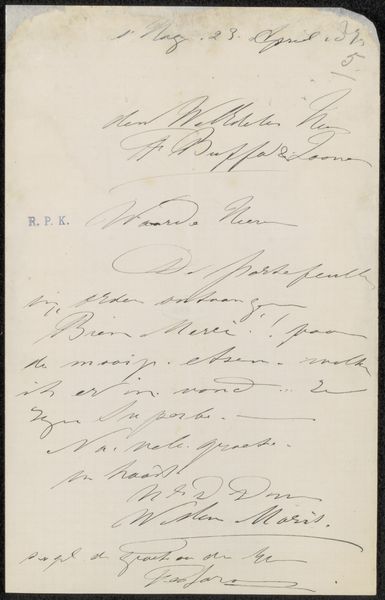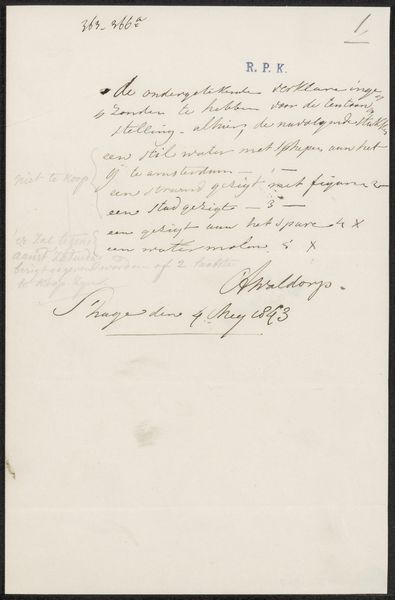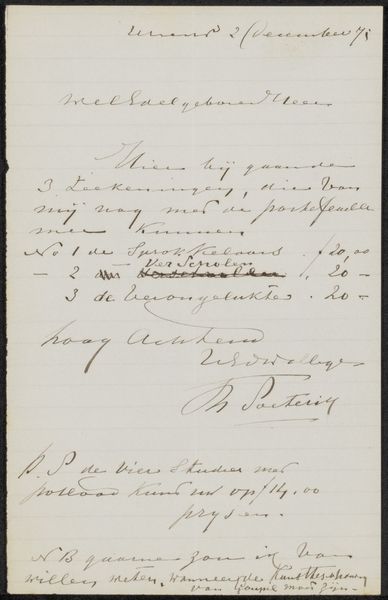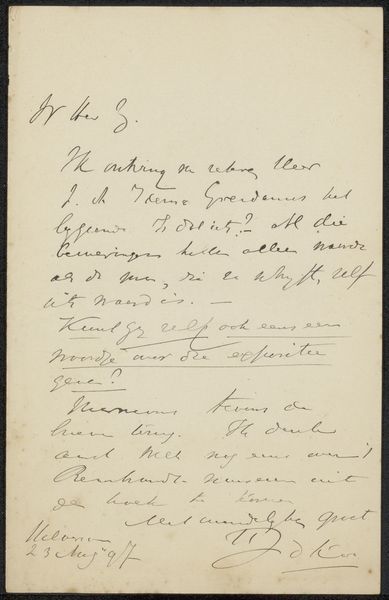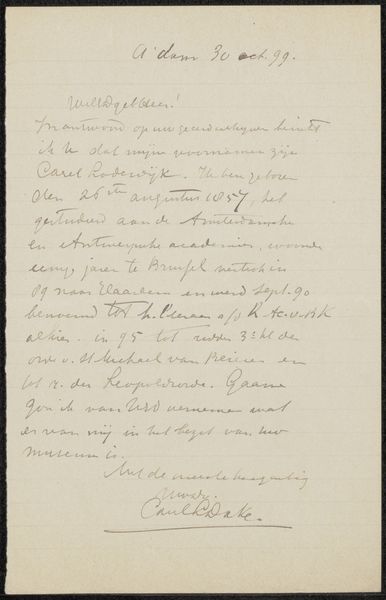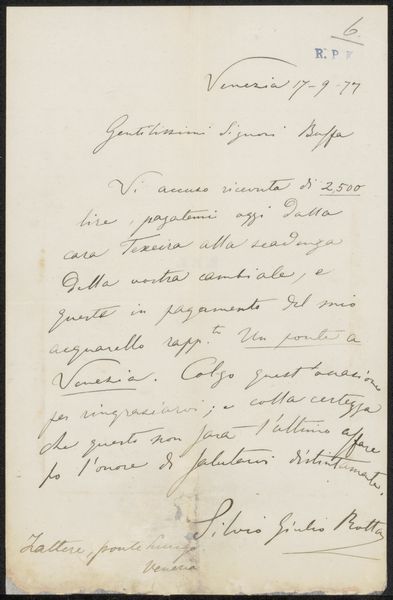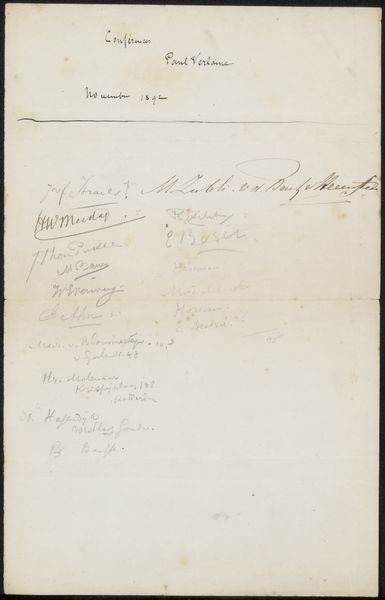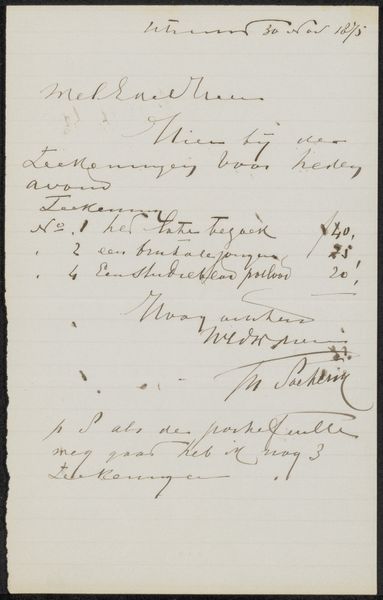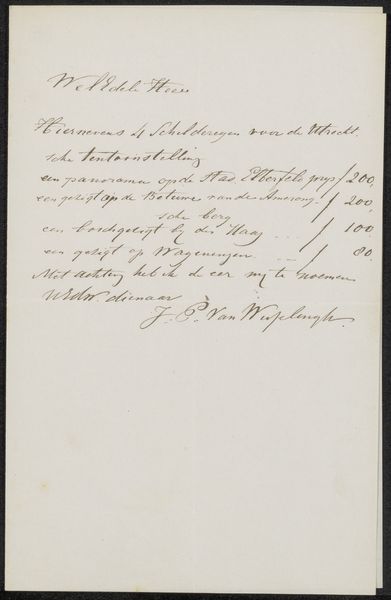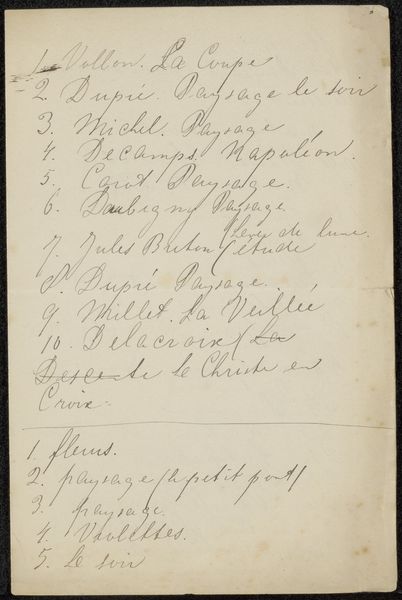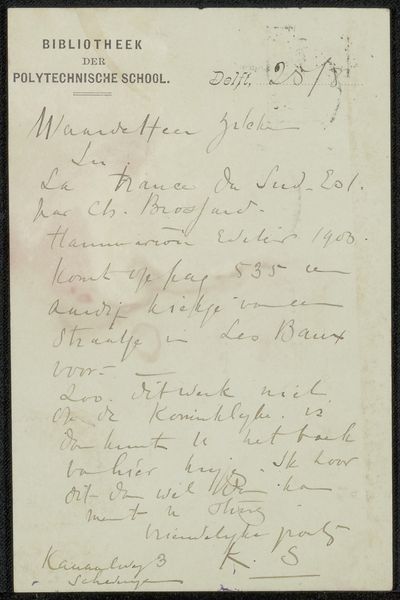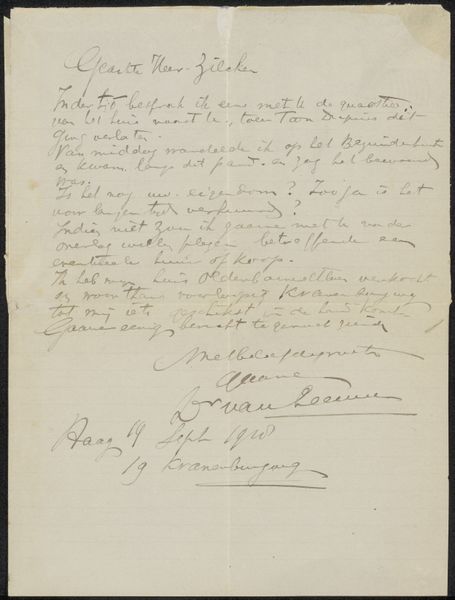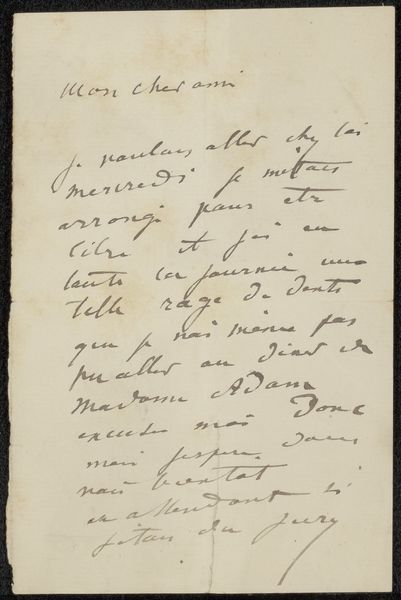
drawing, paper, ink
#
drawing
#
ink drawing
#
paper
#
ink
#
calligraphy
Copyright: Rijks Museum: Open Domain
Curator: Here we have "Brief aan Philip Zilcken," which translates to "Letter to Philip Zilcken", a drawing made with ink on paper. The work is housed right here at the Rijksmuseum and was created by Maurits van der Valk possibly between 1895 and 1899. It seems fragile, almost ghostly, in its preservation. What’s your immediate reaction to it? Editor: I’m drawn to the materiality. It’s so intimate, the paper, the ink… These materials are incredibly common but here, combined with script, they speak of an almost sacred communication. Look at the paper; it looks like it may have been cheap stock even when it was created. This was a working person’s missive, don't you think? Curator: I see what you mean about that. I sense a practical communication. But it makes me think: What sort of person carefully crafts a handwritten note detailing expenses? There's a level of intentionality here, raising it from a simple receipt to something bordering on artistic expression. It hints at a deeply considered connection with Zilcken, as if the mere act of documenting these transactions carries significant meaning for van der Valk. Editor: Right, like labour captured through accounting! I wonder, how much would these materials cost relative to those expenses. I see he lists 1 frame with glass 4.40. Another frame with a drawing 4.30, one with drawing and scharnier for 25. What could "scharnier" mean? Was Valk creating something more lasting than just artwork? Curator: “Scharnier” means hinge in Dutch, how interesting. This gives a completely different meaning to these humble financial entries, maybe Valk saw a value of production for everyone: Zilcken, the manufacturers of the frame, even Valk himself who lists their transactions in almost calligraphic hand! What do you take away from spending this time with "Brief aan Philip Zilcken?” Editor: It reminds me of the labor and economy woven into art's creation, and all the unnamed workers that contributed to it: paper makers, glass blowers, wood suppliers. I'm keen to imagine what they might feel about their unseen labor being highlighted. Curator: Indeed, a quiet contemplation on how a letter's life extends beyond its immediate exchange.
Comments
No comments
Be the first to comment and join the conversation on the ultimate creative platform.
